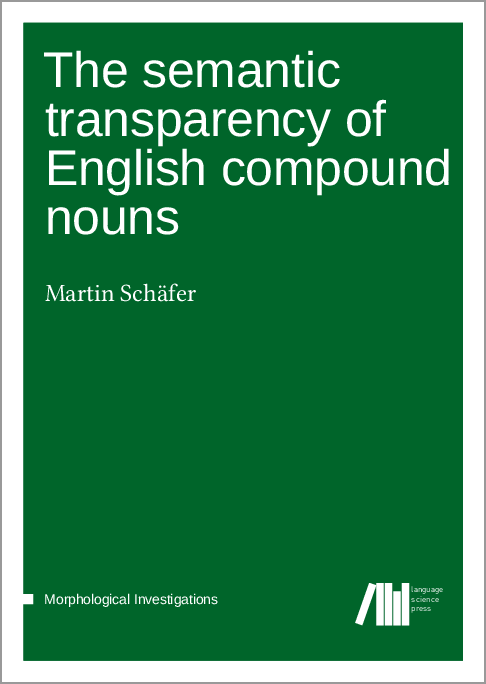In der letzten Zeit sind u.a. diese frei verfügbaren Titel erschienen:
English evidential ‑ly adverbs from a functional perspective
Lois Kemp
https://doi.org/10.48273/LOT0682
Like other languages, English has ways of expressing evidentiality, in other words, ways of expressing the provenance of information from a knowledge base. One such form is the English evidential -ly adverb. The evidential -ly adverbs analysed in this book are: reportedly, purportedly, allegedly, supposedly, evidently, presumably, seemingly, apparently, obviously, clearly, visibly. Using the NOW corpus (News on the Web), the adverbs were extracted with context from UK newspapers. The theoretical framework adopted for the analysis of these adverbs is Functional Discourse Grammar (FDG), a structural-functional approach with a layered hierarchy. Tests using FDG layers are applied to determine the categorization of evidential -ly adverbs into FDG evidential subcategories: reportative, inferential, deductive and event perception. The distribution and behaviour of these adverbs in main clauses, clausal complements and noun phrases are explored by applying FDG tools. It has appeared that some adverbs belong to more than one evidential subcategory and are thus hosted by more than one FDG layer. The meaning of these chameleon-like adverbs is determined by the local context. The FDG analysis and its tests have confirmed the categorization and meaning of the English evidential adverbs. Although the adverbs belong to different layers with different meanings, they all serve to mark a knowledge base as source of information.
The semantic transparency of English compound nouns
Martin Schäfer
https://langsci-press.org/catalog/book/153
https://doi.org/10.5281/zenodo.1134595
What is semantic transparency, why is it important, and which factors play a role in its assessment? This work approaches these questions by investigating English compound nouns. The first part of the book gives an overview of semantic transparency in the analysis of compound nouns, discussing its role in models of morphological processing and differentiating it from related notions. After a chapter on the semantic analysis of complex nominals, it closes with a chapter on previous attempts to model semantic transparency. The second part introduces new empirical work on semantic transparency, introducing two different sets of statistical models for compound transparency. In particular, two semantic factors were explored: the semantic relations holding between compound constituents and the role of different readings of the constituents and the whole compound, operationalized in terms of meaning shifts and in terms of the distribution of specifc readings across constituent families.
All semantic annotations used in the book are freely available.
These kind of words: Number agreement in the species noun phrase in International Academic English
Adrian Stenton
https://doi.org/10.48273/LOT0675
This study examines a single English language usage problem, the use of number agreement in the variant forms of the species noun phrase – e.g. this kind of error vs. these kinds of errors vs. these kind of errors vs. errors of this kind – from three different perspectives: those of linguists, prescriptivists and the general public. The study, framed by the descriptions given in modern reference grammars and theoretical analyses (the linguists), is conducted within the historical perspective of the advice given in English usage guides published between 1770 and 2010 and beyond (the prescriptivists). The general public is given a voice in the form of an online survey of attitudes to the variant forms the species noun phrase may take, and by an analysis of a corpus of un-copy-edited academic writing that was compiled specifically for this study.
The main findings of the study are (i) that there is a great deal of harmony between the views of the three groups studied, and that, on the basis of this three-pronged analysis, the popular view of ‚descriptive‘ linguists in conflict with ‚prescriptive‘ usage guides is not justified; and (ii) that the innovative use of multiple contextualised examples in the attitude survey contributes to the suggestion of ‚gradience‘ or a ‚cline of acceptability‘ on the part of the general public, rather than a simple ‚acceptable‘ vs. ‚unacceptable‘ stance.



